
Records suggest large flocks of Gouldian finch (Erythrura gouldiae) including many hundreds – possibly thousands – of individual birds, were common across northern Australia’s savannah grasslands in the late 1800s, before pastoralism and collecting the species began having an impact. Little than a century later, this exquisite species – arguably the world’s most beautiful bird – was en route to disappearing forever from the wild.
“It was probably on a trajectory to extinction by the 1980s,” says Dr Alexander Watson, a regional ecologist at Australian Wildlife Conservancy (AWC). “In the late ’90s and early 2000s, people became very concerned about losing the Gouldian finch from the wild forever.” At the time, the species faced several significant threats, including a respiratory parasite that had become prevalent in Gouldians kept in aviaries and had spread to the wild population.
But historically, the species had already suffered huge declines because of high demands among bird collectors worldwide. The capturing and exporting of Gouldians began in earnest from 1897, when finch trapping started in the Kimberley region of Western Australia. The Gouldian finch was the most in-demand of almost a dozen native northern Australian finch species and thousands were trapped annually and sent offshore to the aviaries of bird collectors. The trade peaked in 1958, when more than 38,000 finches were trapped – mostly for export – including 11,000 Gouldians.
This story is from the {{IssueName}} edition of {{MagazineName}}.
Start your 7-day Magzter GOLD free trial to access thousands of curated premium stories, and 9,000+ magazines and newspapers.
Already a subscriber ? Sign In
This story is from the {{IssueName}} edition of {{MagazineName}}.
Start your 7-day Magzter GOLD free trial to access thousands of curated premium stories, and 9,000+ magazines and newspapers.
Already a subscriber? Sign In

SULAWESI SENSATIONS
There are worlds within worlds and marvels untold waiting to be experienced on Indonesia's remote islands.
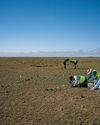
SEARCHING FOR AUSSIE DINOSAURS
Our understanding of where to find ancient life in Australia has been turned on its head by a new appreciation of the country's geology. Now the world is looking to our vast outback as the latest hotspot to locate fossils.
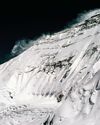
THE HARDEST NIGHT
The first Australian ascent of Mt Everest in 1984 is one of the great feats of mountaineering. Climbed by a small team semi-alpine style, with no bottled oxygen, via the Great (Norton) Couloir, it remains unrepeated 40 years later.
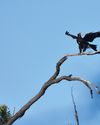
WEDGE-TAILED WONDER
The chance discovery of an eagle nest leads to an extended vigil observing normally hidden behaviours of one of nature's supreme winged marvels.
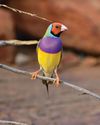
BURDENED BY BEAUTY
Northern Australia's Gouldian finch survives in huge numbers in cages around the world, but its wild population continues to struggle.
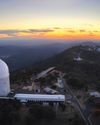
A TELESCOPE FOR A GOLDEN AGE
After a stellar 50 years as one of the country's major scientific assets, the AAT continues to play a major role in keeping Australian astronomy on the world stage.
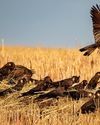
COCKY WHISPERING AT COOMALLO CREEK
This patch of remnant bush on the edge of the West Australian wheatbelt is a place loved by one of Australia's rarest bird species and the man who has studied the site for more than 50 years.

A PIONEERING PAIR
Louisa Atkinson and her mother, Charlotte, were among Australia's earliest authors, and pioneers in women's rights.

THE LONGEST WALK
Lucy Barnard is walking from Argentina to Alaska -the length of the Americas - on an extraordinary journey of endurance and adventure.
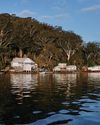
SECLUDED, BUT NOT ALONE
In an era of heightened social isolation, where many of us lead lonely lives, Dangar Island offers the chance to be part of a supportive, connected community.